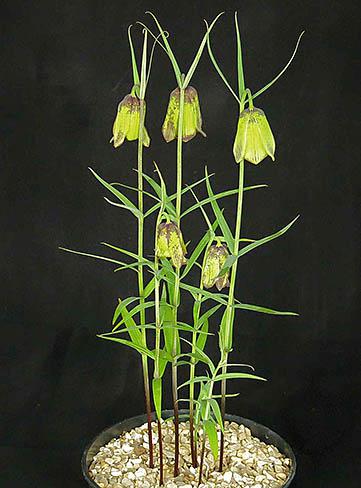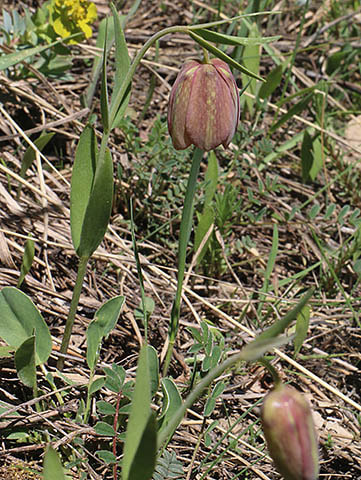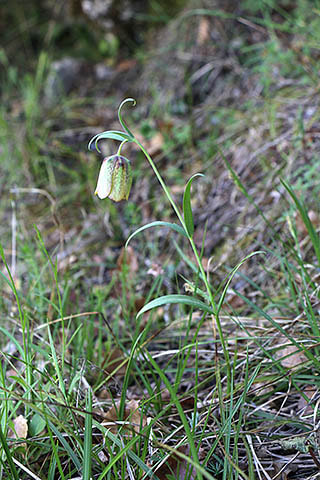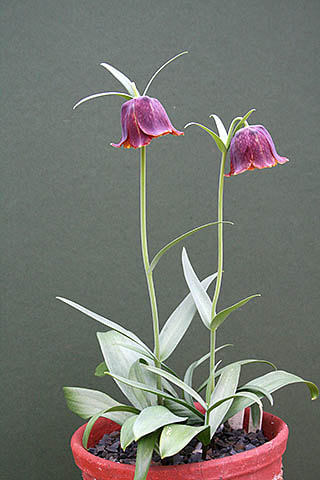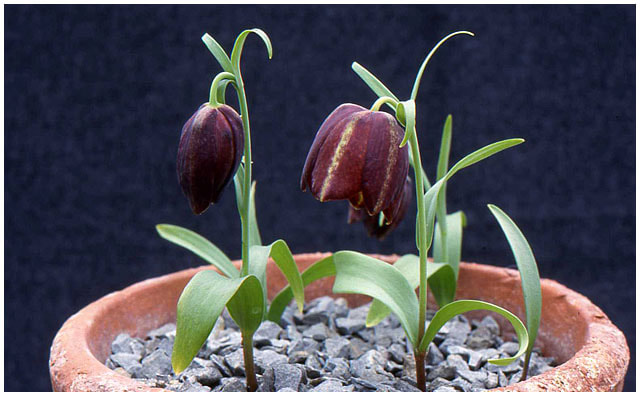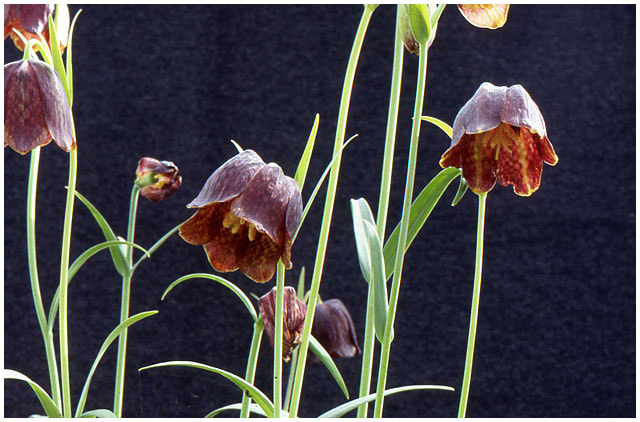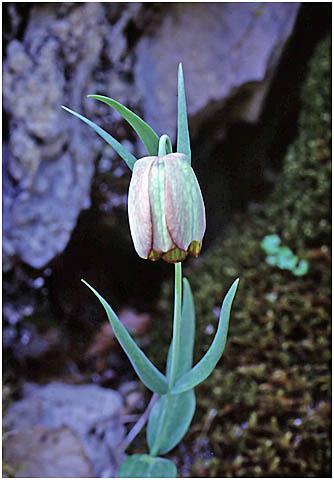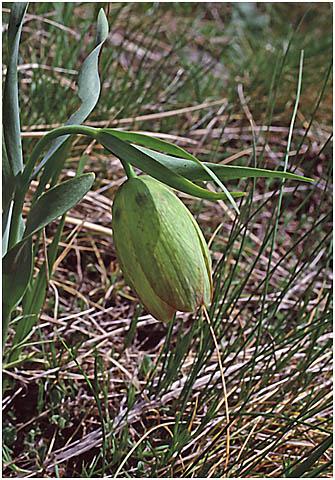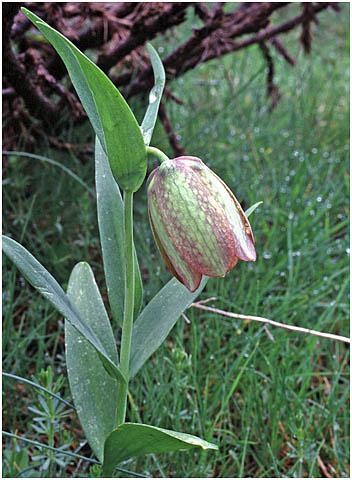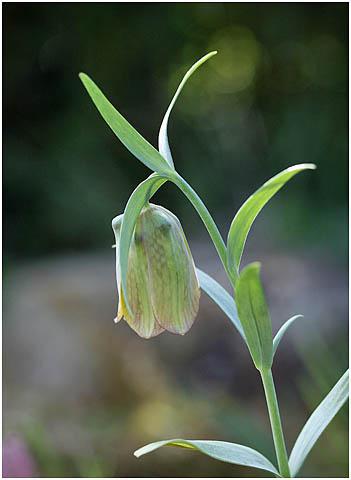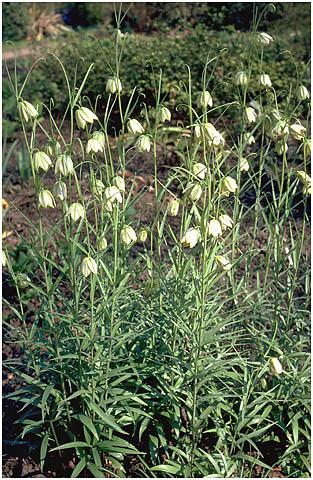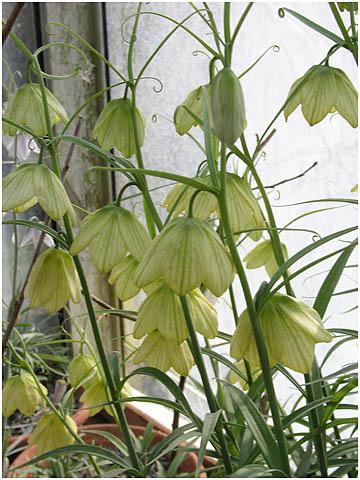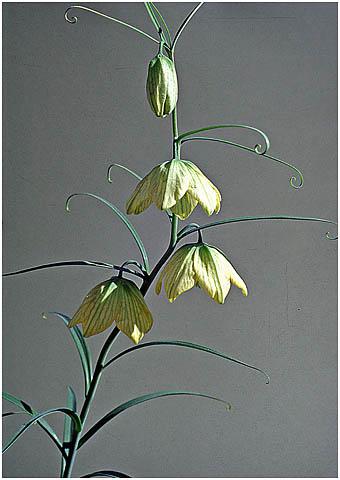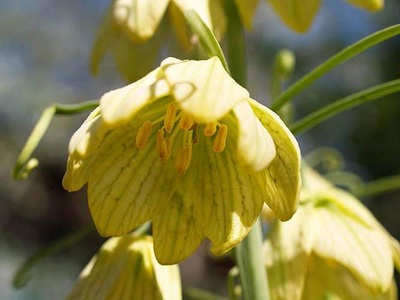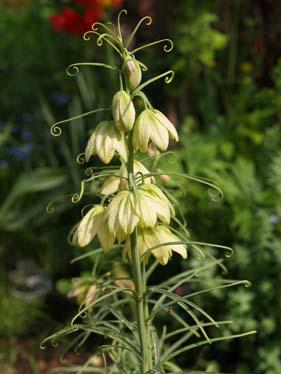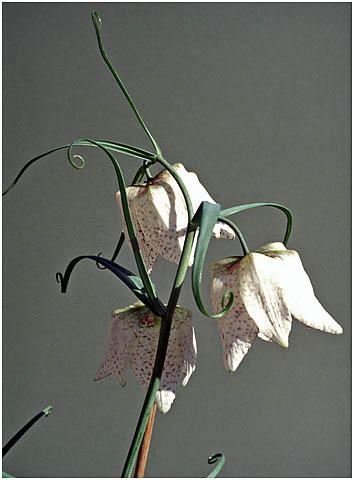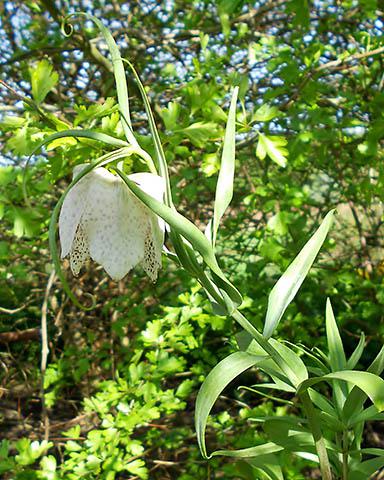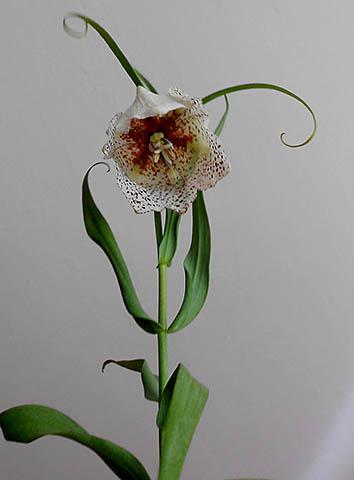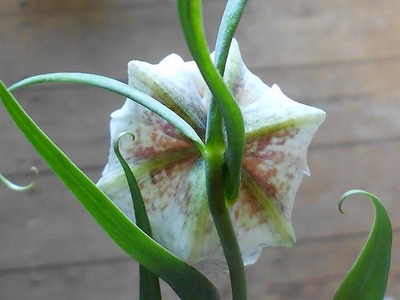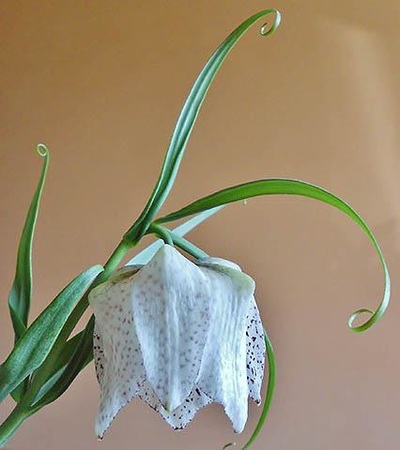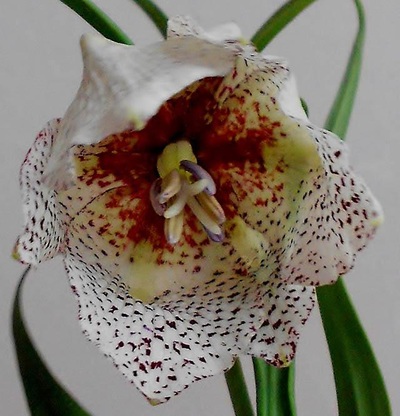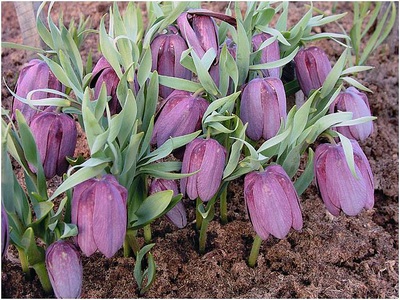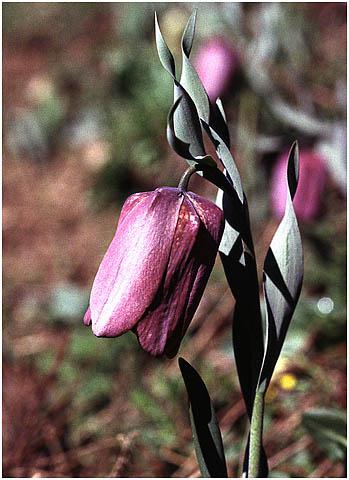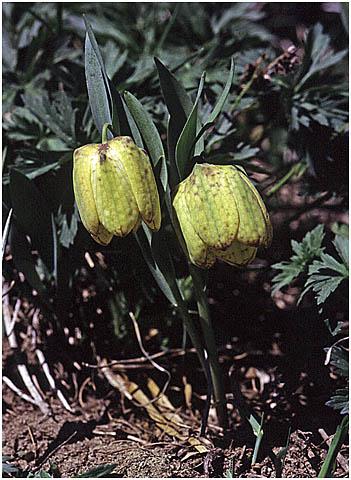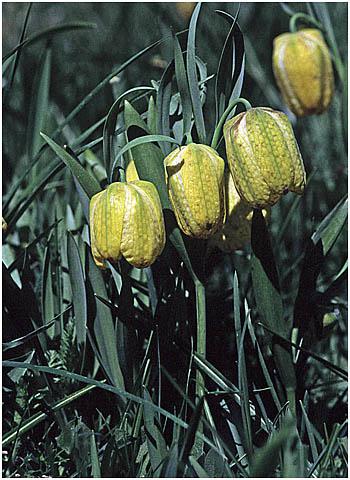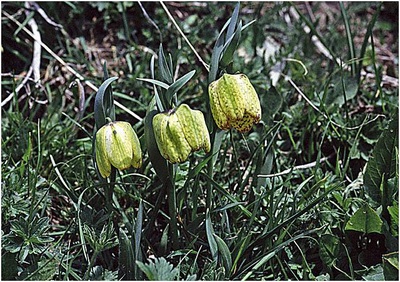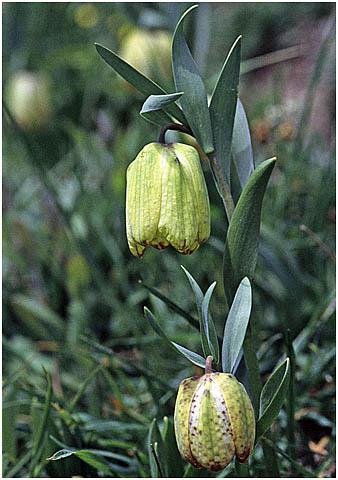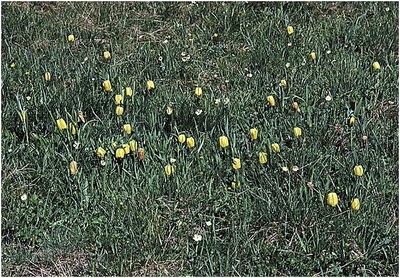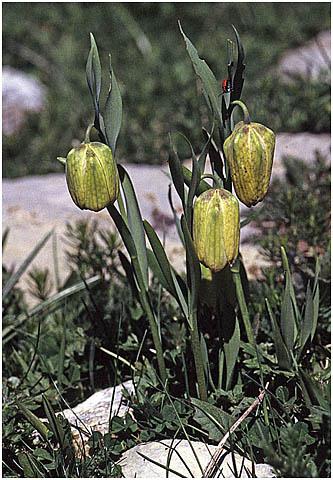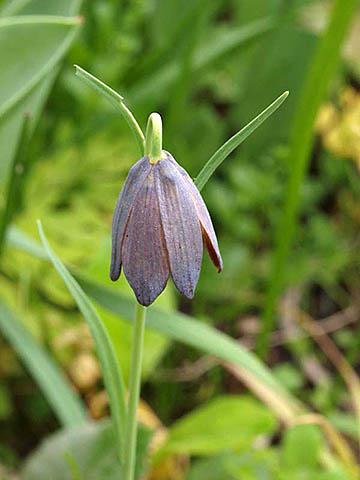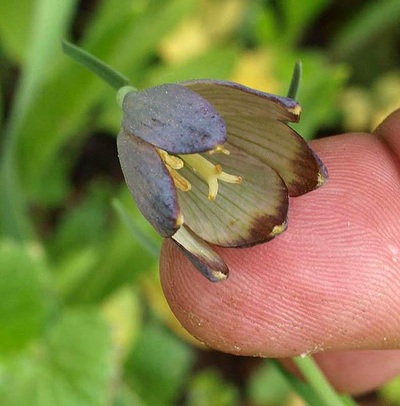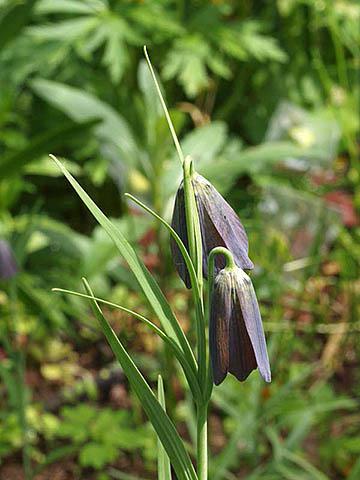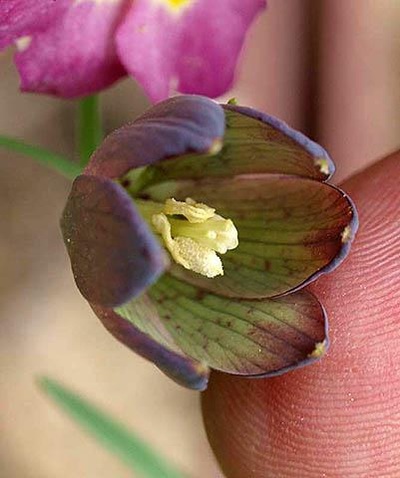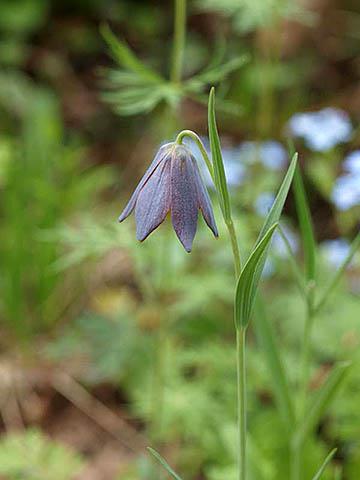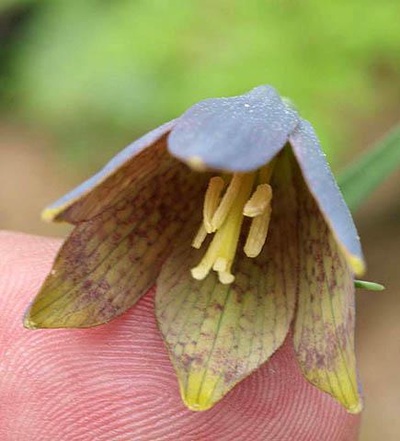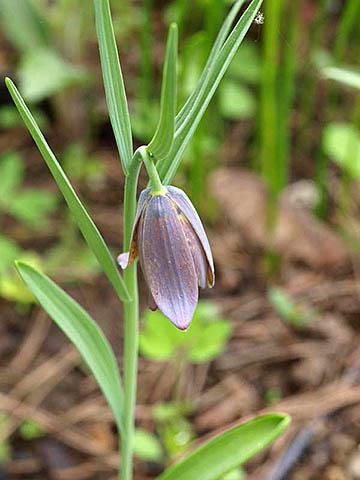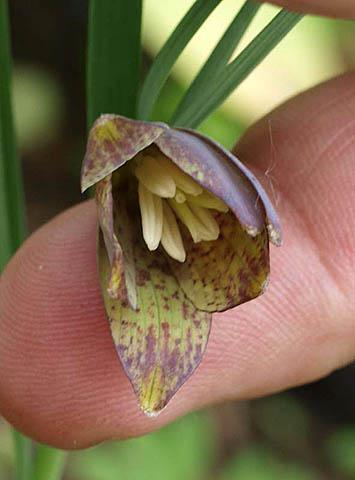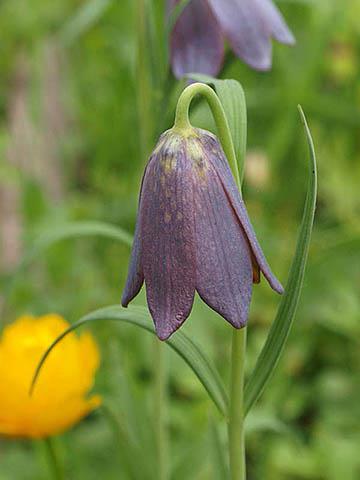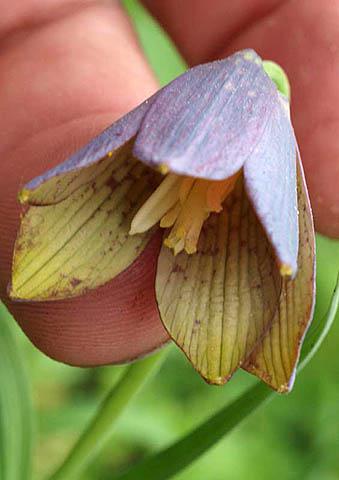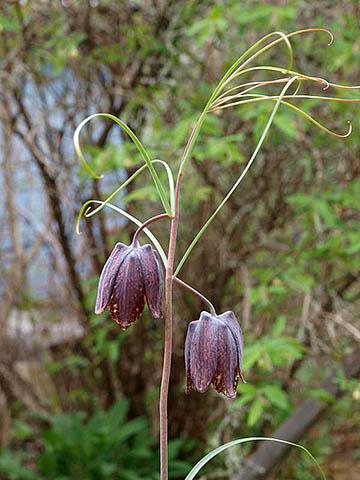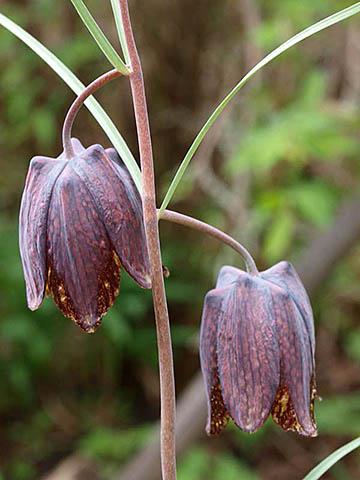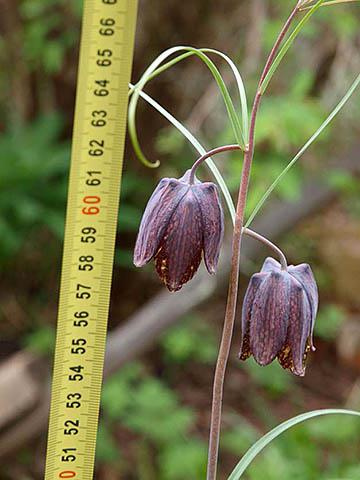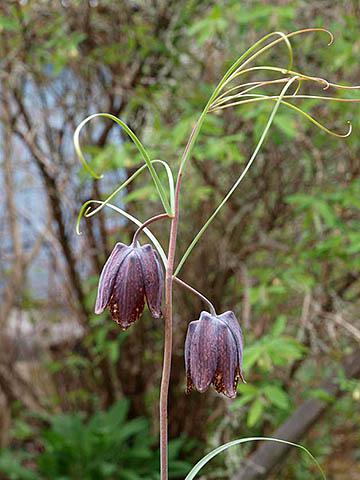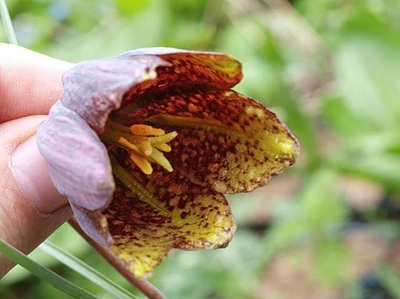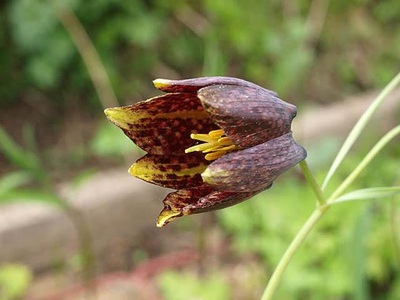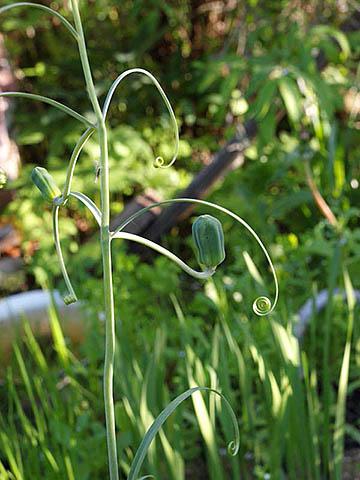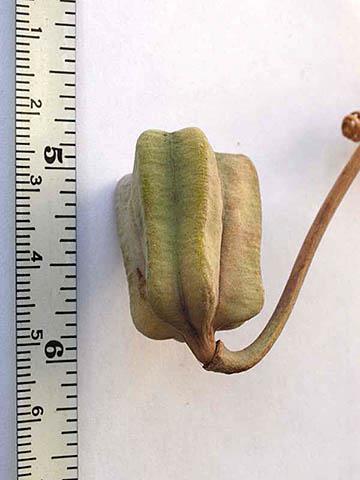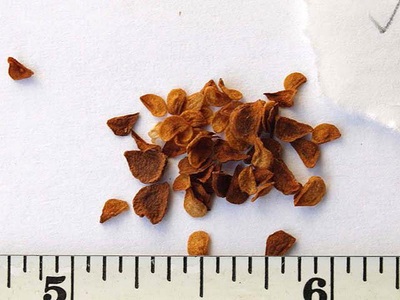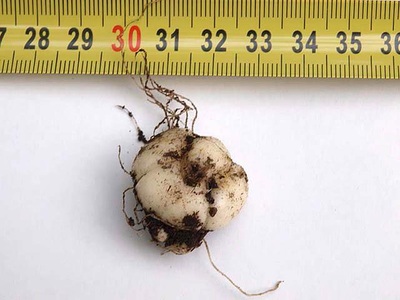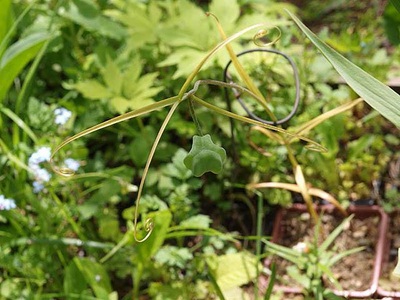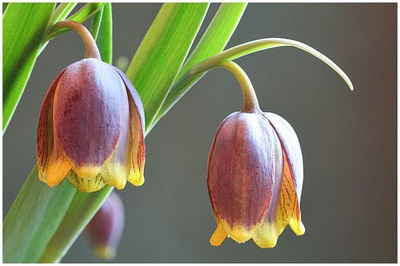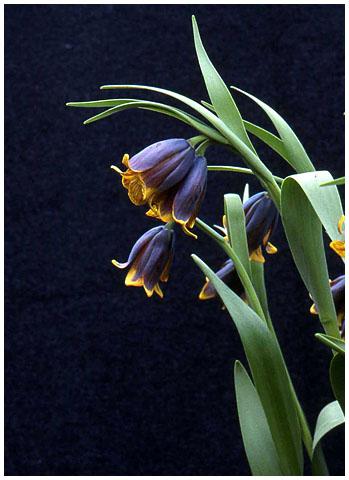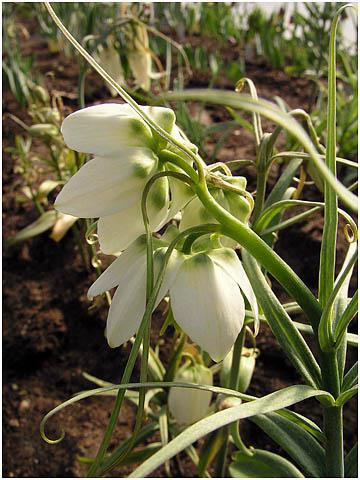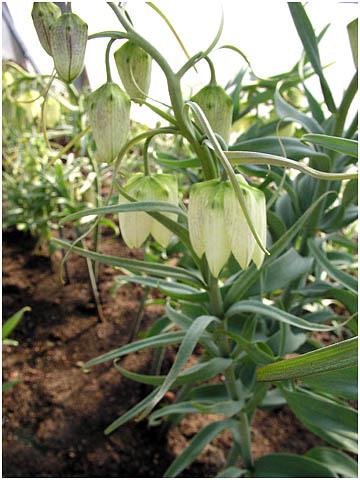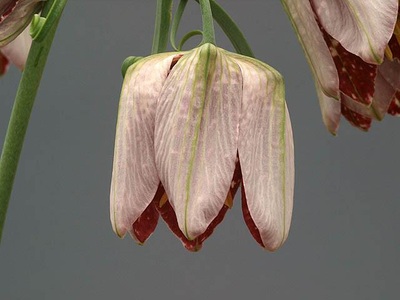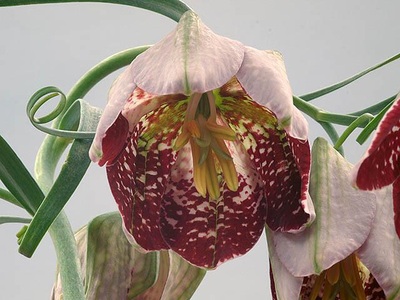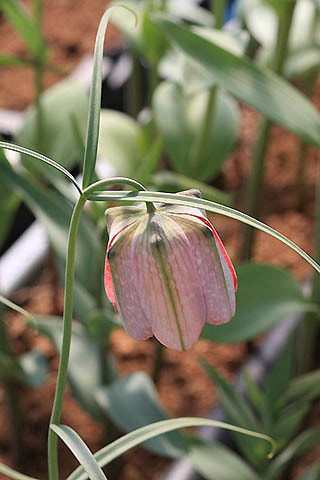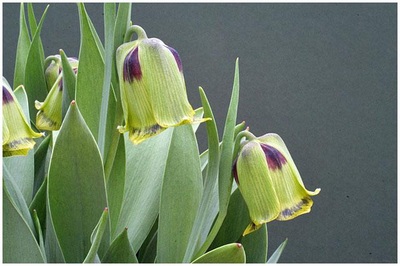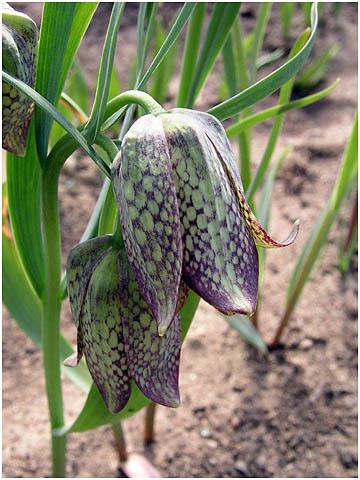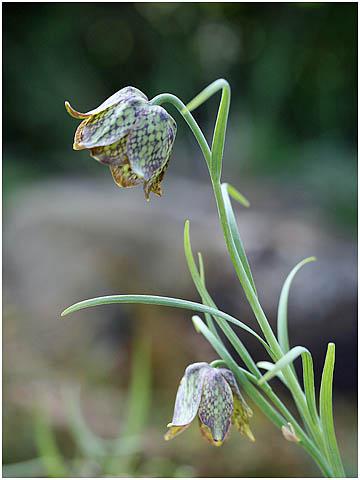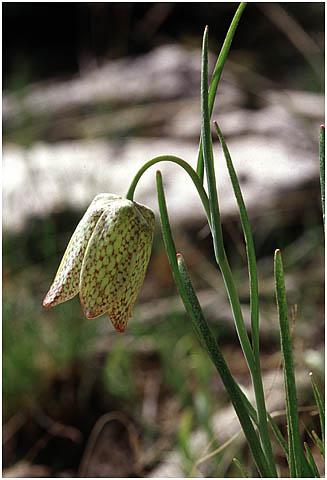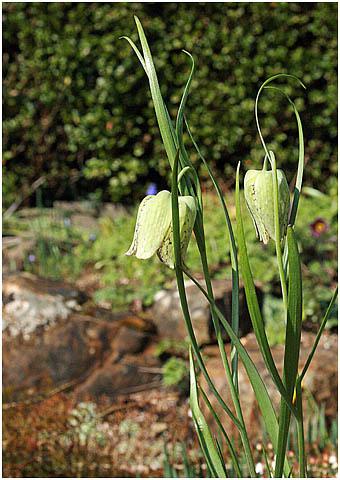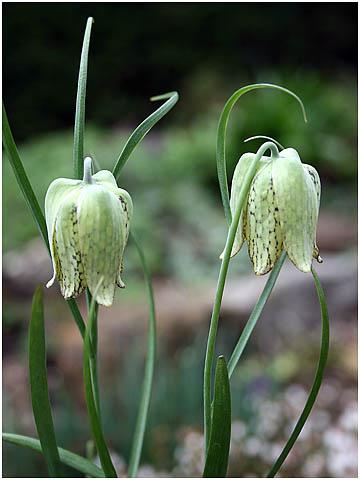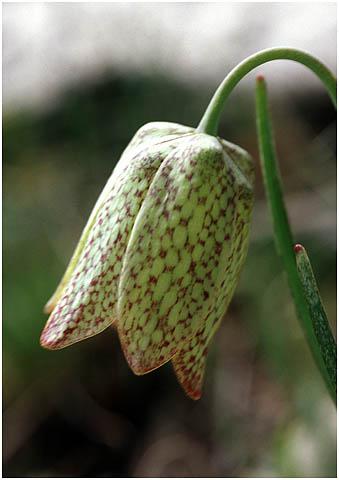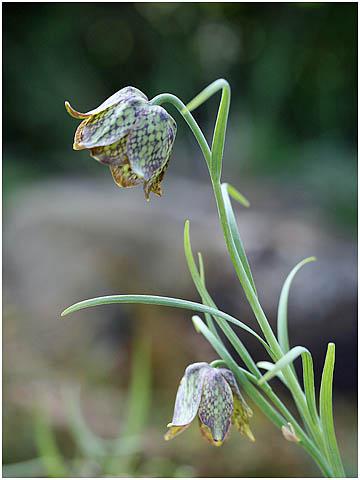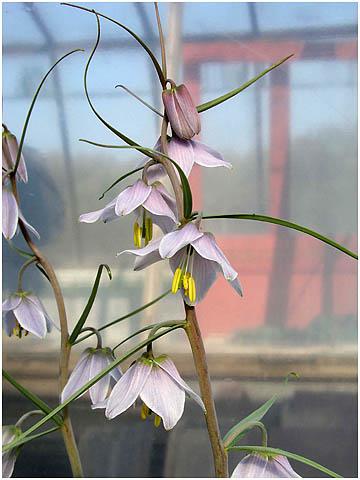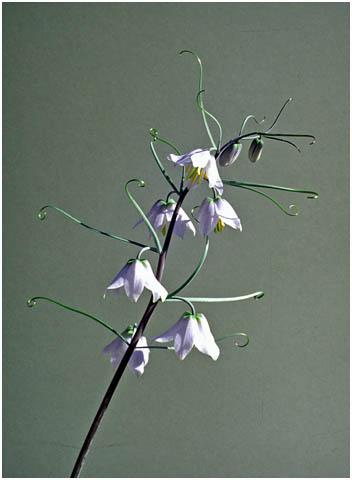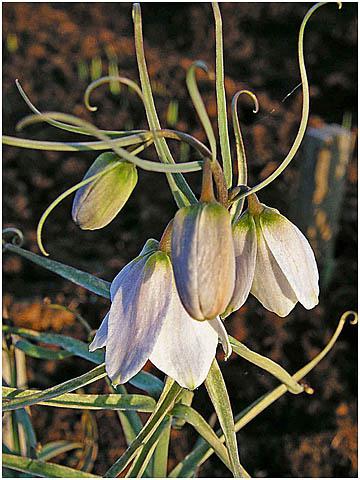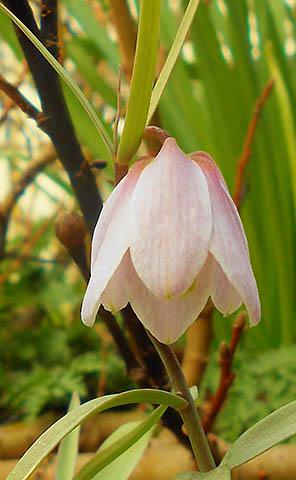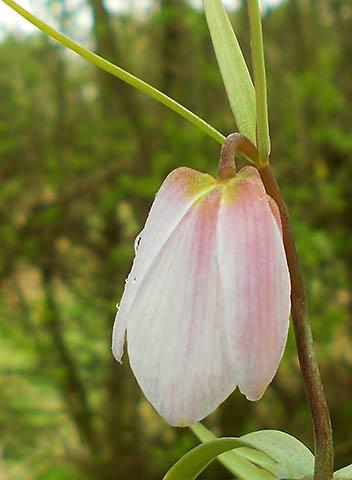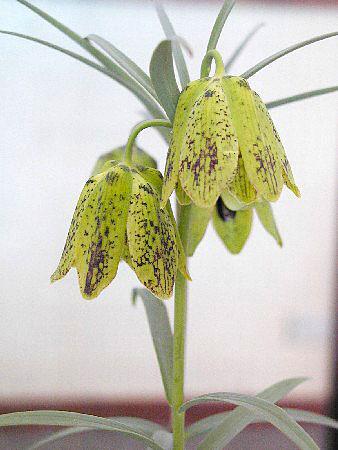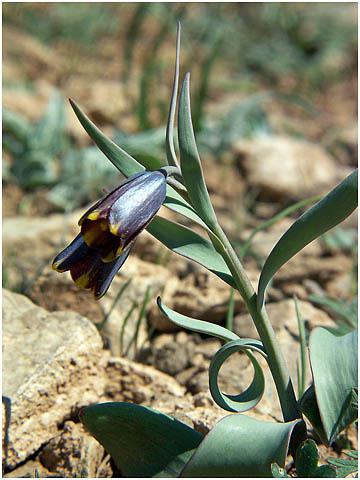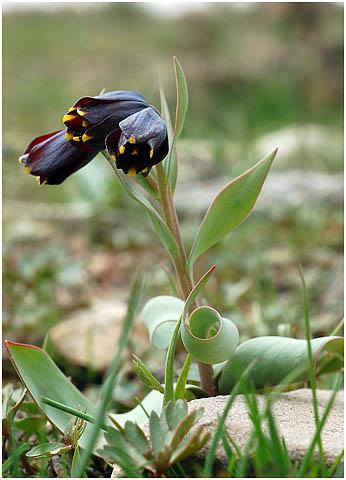COPYRIGHT: All images are © of the respective photographers. THEY MAY NOT BE COPIED AND USED ELSEWHERE WITHOUT PERMISSION.
FRITILLARIA SPECIES: T - Z
Each species has been assigned a Cultivation Group, either A, B, C, or D. To view descriptions of these groups, click on Cultivation Groups or scroll to the bottom of this page where they are repeated.
|
Fritillaria thessala ssp thessala This broad-leaved inhabitant of the woods of north-western Greece has characteristically slightly tesselated flowers and the three upper-most leaves are in a whorl. The southern populations have lanceolate nectaries (more than 4 mm long) and tend to have narrower leaves (up to 2.5 cm wide)
Cultivation Group: A |
|
Fritillaria thunbergii This species has been widely cultivated for the Traditional Chinese Medicine trade and consequently has been distributed far and wide from its original place of origin which remains a mystery. The gently roundly shoulders of the flowers provide an easy method of identification from the square bells of F verticillata with which it is confused in the literature.
Cultivation Group: B It is easy to grow and can be grown in the garden where it can be shy with its pale green-white slightly tesselated flowers. |
|
Fritillaria tokushimensis Narrowly campanulate, untessellated flowers with purple-crimson anthers are the distinguishing features of the species of the Japonica subgenus.
Cultivation Group: D |
Sorry, we have no photo of this species. Could you provide one?
|
|
Fritillaria tubiformis ssp. tubiformis The very large deep brown flowers on short stems of this plant of the European Alps have a distinct greyish bloom on the outside which separates from the similar F latifolia of NE Turkey.
Cultivation Group: B kept cool and not too dry in summer. Some find it easy in a bulb frame or raised border in peaty soil. |
|
Fritillaria unibracteata var. longinectarea
Cultivation Group: D |
Sorry, we have no photo of this species. Could you provide one?
|
|
Fritillaria uva-vulpis This seems to be mainly a field weed which has become established in the borders of Turkey, Iran and Iraq. It is highly vegetative with its numerous bulbils and this has provided the ready means of propagation which has resulted in it being widely available in the trade. In the best forms it has characteristic brown “egg-shaped” flowers which have a distinct yellow tip.
Cultivation Group: B Easy in the garden. |
|
Fritillaria verticillata A beautiful species from the continental climate of NE Kazakstan and Xinjang Province of China. It grows amongst small shrubs such as Spiraea through which it clambers with the help of its tendril-like upper leaves which entwine the small twigs. It has large white broadly campanulate flowers with little or no pink spots inside.
Cultivation Group: B |
|
Fritillaria viridea Similar to a small-flowered form of F affinis but now considered to be a separate taxon. The flowers are greenish and lack any tesselation. It grows under scrub in southern California.
Cultivation Group: A or B but its near absence from cultivation may indicate that it is tricky to grow. |
Sorry, we have no photo of this species. Could you provide one?
|
|
Fritillaria viridiflora
|
Sorry, we have no photo of this species. Could you provide one?
|
|
Fritillaria walujewii This has been cultivated occasionally and is a beautiful species much like F verticillata with its square-shouldered bells. The colour is a greyish-white on the outside which is so heavily tesselated inside with red as appear red. It is a native of NW China and E Kyrgyzstan where it climbs through scrub by means of its tendril-like upper leaves.
Cultivation Group: B |
|
Fritillaria wendelboi Distinguished from F acmopetala by its broader leaves and squarer bells. It grows in the Taurus mountans and at higher altitude but nevertheless is easily cultivated. Can also be grown outside in a sunny, well-drained position, or in the bulb frame or alpine house in a pot.
Cultivation Group: A |
|
Fritillaria yuzhongensis This name is used in Flora of China to represent the smaller-flowered forms of the highly variable F cirrhosa from the continental climate of NW China. The nectaries are more or less rounded compared to the larger elliptical or ovate ones of F cirrhosa.
Cultivation Group: D or possibly B |
Cultivation Groups
Group A
Those from a Mediterranean-type climate zone at low to medium altitude. The major precipitation is during the winter and early spring but the summer is dry. The bulbs are dormant in summer but often protected from the heat of direct sunlight by tall herbs, shade of trees or by coastal fog.
It is worth trying these in well-drained soil in the open garden but unless your climate is Mediterranean in character, dryness in the summer will usually need to be contrived by overhead protection or planting amongst established, deciduous, shrub or tree roots. These species tend to be straightforward to grow in pots with summer dryness. In the northern hemisphere, watering is best started sparingly from mid-September, increasing once the shoots appear until dormancy sets in in May.
Group B
Those from high altitude and/or inland sites. The major soil moisture in this case is provided by melting snow in the spring and, although occasional thunder storms may occur, the summers tend to be dry but not so hot. In winter the soil is normally covered in snow so the temperature and soil water content is constant for what can be 5 or 6 months of winter during which little growth occurs.
These are normally more difficult in the open garden but can be grown in gritty compost in pots in a cold greenhouse with watering as above. Some benefit from refrigeration in winter in order to maintain dormancy.
Group C
Semi Desert plants. These are from inland sites with cold dry winters, some snowfall, spring snowmelt, and then very dry summers.
In most countries these are not suitable for outdoor cultivation but they grow well in pots in gritty compost under glass. They are best kept dry until early winter when water can be given sparingly until growth appears in spring.
Group D
Those from areas with summer rainfall and cool/cold dry winters. For example, those species from the Himalayas, SW China and NE China, Japan and SE Siberia. These all grow in fairly cool conditions throughout the year, often under protective shade of shrubs or deciduous trees. Snow and snowmelt are important but so is summer rainfall. The main growing season is through spring but root growth can start during the summer, coinciding with the summer rains.
These seem to do quite well in cooler climates grown either in the open garden or in pots of gritty, humus soil, kept outside with perhaps a little protection from excessive winter rain.
Group A
Those from a Mediterranean-type climate zone at low to medium altitude. The major precipitation is during the winter and early spring but the summer is dry. The bulbs are dormant in summer but often protected from the heat of direct sunlight by tall herbs, shade of trees or by coastal fog.
It is worth trying these in well-drained soil in the open garden but unless your climate is Mediterranean in character, dryness in the summer will usually need to be contrived by overhead protection or planting amongst established, deciduous, shrub or tree roots. These species tend to be straightforward to grow in pots with summer dryness. In the northern hemisphere, watering is best started sparingly from mid-September, increasing once the shoots appear until dormancy sets in in May.
Group B
Those from high altitude and/or inland sites. The major soil moisture in this case is provided by melting snow in the spring and, although occasional thunder storms may occur, the summers tend to be dry but not so hot. In winter the soil is normally covered in snow so the temperature and soil water content is constant for what can be 5 or 6 months of winter during which little growth occurs.
These are normally more difficult in the open garden but can be grown in gritty compost in pots in a cold greenhouse with watering as above. Some benefit from refrigeration in winter in order to maintain dormancy.
Group C
Semi Desert plants. These are from inland sites with cold dry winters, some snowfall, spring snowmelt, and then very dry summers.
In most countries these are not suitable for outdoor cultivation but they grow well in pots in gritty compost under glass. They are best kept dry until early winter when water can be given sparingly until growth appears in spring.
Group D
Those from areas with summer rainfall and cool/cold dry winters. For example, those species from the Himalayas, SW China and NE China, Japan and SE Siberia. These all grow in fairly cool conditions throughout the year, often under protective shade of shrubs or deciduous trees. Snow and snowmelt are important but so is summer rainfall. The main growing season is through spring but root growth can start during the summer, coinciding with the summer rains.
These seem to do quite well in cooler climates grown either in the open garden or in pots of gritty, humus soil, kept outside with perhaps a little protection from excessive winter rain.
